|
Last week I went home to North Dakota for Mom's funeral. The service ended up being lovely, with a huge turnout, and so nice to see extended family and old friends. Reminders of her were everywhere, of course, but while her garden was starting to come up, including the special fern peonies she rescued from her grandmother's garden, nothing was really blooming yet. But the rhubarb on the south side of the house was already going gangbusters. About a month ago, right after Mom died, my sister and I were going through some of the books she had out, including cookbooks. Sister found a copy of the Ritzy Rhubarb Secrets Cookbook: Rhubarb Recipes by the Good Cooks of Litchville, North Dakota and the Surrounding Area, which is much in-demand on the North Dakotan corners of the internet. Edited by Jane Winge and originally published in 1991 and reprinted in 1992, 1993, 2000, and 2002, it's probably the most popular rhubarb cookbook in the Upper Midwest. We both wanted it, but given my already extensive cookbook collection, I said she could have it. Except then we found another copy! Thanks to Mom's thrifting skills, we both got to have one. Which was just a perfect present from her. All of the guests for the funeral were gone by Sunday, leaving just me and Dad. I decided I wanted to make a rhubarb cake for the two of us. We had the most delicious rhubarb bars at the after-service dinner, but they ran out before I could get one! Thankfully a friend had gotten dessert WITH her dinner, and shared. We found out later the young (and very talented) baker thought that people might not like rhubarb, so she didn't make as much of those as the other bars (rommegrot bars - a take on a favorite Norwegian cream porridge). I was like, "Not this crowd!" Rhubarb is very popular around here and those who moved away remember it from childhood. Everyone raved that they were the best rhubarb bars they'd ever had. And while I sadly do not have that recipe (yet, lol), I was feeling cake-ish (as I often do), so searched the Ritzy Rhubarb Secrets Cookbook for a likely candidate. This one immediately struck my fancy. Not only was it the first one listed in the cake section, it also looked easy as pie. "The judges awarded Evy a blue ribbon. They said that selecting the winning cakes was a difficult task as they all looked nice. A traditional flavor was looked for. They liked the crunchy texture and nuts with a good fresh flavor. 'Simple recipes are good.'" How's that for the most North Dakotan review ever? But they're not wrong. This is a simple recipe with good, fresh flavor. No butter to soften and mixes up in a flash. The sour cream provides the fat and moisture in the recipe, and the baking soda reacts with the acidity in the sour cream to create lift, with help from the egg. Rhubarb-Sour Cream Cake RecipeHere's how Evy's original recipe reads: 1 egg 1 cup sugar 1 cup sour cream 1 1/2 cups flour 1 teaspoon baking soda 1/2 teaspoon salt 2 cups rhubarb, cut up Topping: 1/2 brown sugar and as many nuts as you like Beat eggs, sugar, and sour cream together. Add flour, soda, and salt. Mix well. Add rhubarb. Pour into greased and floured 13x9 pan. Sprinkle topping over cake. Bake at 350 for 35-40 minutes. Here's my adaptation, because since Dad doesn't bake, some of the ingredients were a bit lacking. The main one being I substituted nonfat plain Greek yogurt for the full fat dairy sour cream. Still turned out wonderfully, though! 1 egg 1 cup sugar (Mom only had raw sugar) 1 cup nonfat Greek yogurt 1 teaspoon vanilla extract 1 tablespoon vegetable oil (skip if using full fat yogurt or sour cream) 1 1/2 cups flour 1 teaspoon baking soda 1/2 teaspoon salt at least 2 cups chopped rhubarb 1 tablespoon raw sugar 1/4 cup sliced almonds Grease and flour a 9"x13" glass baking dish and preheat the oven to 350 F. Chop fresh rhubarb in advance. If using frozen, thaw and drain. Whisk the egg, sugar, yogurt, vegetable oil, and vanilla together. Add the flour, baking soda, and salt and stir quickly with wooden spoon. Add rhubarb and stir to combine, then pour into greased and floured baking dish and spread evenly. Work quickly as the baking soda will instantly start to react with the acid in the yogurt (probably a big slower with dairy sour cream). Sprinkle with sliced almonds, and then sprinkle sugar on top. Bake at 350 F for 30-40 minutes, or until top is golden brown. This makes a springy, delicious cake that would be good with any type of berry as well. Serve plain or with whipped cream, warm or cold. The rhubarb is not sweetened, so the sugar on top is necessary, along with the full cup of sugar in the batter. If you like your desserts very sweet, toss the rhubarb in sugar to coat before baking. But for me this was just perfect. This cake was so easy it is definitely going in regular rotation. It will probably be a little more tender and moist with real sour cream, or full-fat yogurt, than the nonfat kind, however. But I could see it easily adapting to each fruit harvest as it comes in - rhubarb, strawberries, sour cherries, raspberries, blueberries, peaches, plums, blackberries, etc. And of course, you can always slice and freeze raw rhubarb for wintertime baking. Litchville is a very small town in Barnes County in the Eastern half of the state, and clearly there are lots of rhubarb experts there! The cookbook has approximately 150 pages of recipes, everything from the more traditional like cakes, pies, and preserves, to beverages, breads, and salads. Rhubarb culture is strong in the Upper Midwest, especially North Dakota, because the cold climate makes it difficult to grow most fruits. Rhubarb thrives in cold and neglect. North Dakota's long, cold winters, and cool, wet springs are perfect for rhubarb, which needs a certain number of below-freezing days in the winter to produce. Certainly the rhubarb I planted in New York is doing much less well. According to Ritzy Rhubarb, "Rhubarb is an enigma. Botanically it is a vegetable, but legally it is a fruit. A court ruling in Buffalo, New York, on July 17, 1947, declared it a fruit because its use in the home is similar to that of other fruits." Rhubarb is related to buckwheat, and only the stalk is edible. The leaves contain a toxic amount of oxalic acid (what makes rhubarb sour) and should not be eaten. The stalks, which range in color from pale green to ruby red, are a sour treat after a long winter. Mom and others of her generation remember going out to the garden with a cup of sugar and a paring knife and dipping the raw rhubarb stalks in the sugar to eat. That's a little too sour for me, but a fun childhood memory. I like rhubarb in everything from pie, bars, cakes, breads and jams to more savory applications like mixing rhubarb sauce with garlic and eating it with chicken or pork. Yum. Do you have a favorite way to eat rhubarb? The Food Historian blog is supported by patrons on Patreon! Patrons help keep blog posts like this one free and available to the public. Join us for awesome members-only content like free digitized cookbooks from my personal collection, e-newsletter, and even snail mail from time to time! Don't like Patreon? Leave a tip!
1 Comment
Washington Pie HistoryWashington pie is everywhere in 19th century cookbooks. Confusingly, it is not a pie. Gastro Obscura traced the history of Washington pie, but spoiler alert - it was called a pie because it was baked in tin pie pans, which back then had straight sides similar to modern cake pans. WHY it was named after George Washington isn't clear - and the earliest references we can find date to 1850. Gastro Obscura and Patricia Reber trace it back to Mrs. Putnam's Receipt Book and Young Housekeeper, by Elizabeth H. Putnam and published in 1850. But I found another reference from 1850, the Practical Cook Book by Mrs. Bliss (of Boston), also published in 1850, for "No. 1 Washington Cake," which included the note "This cake is sometimes called WASHINGTON PIE, LAFAYETTE PIE, JELLY CAKE, &c." Mrs. Bliss' recipe is preceded by the lovely-sounding "Virginia Cake," which calls for sieved sweet potato and molasses, and "Victoria's Cake," which is a lemon-flavored sponge cake with no mention of the jam and cream commonly found in Victoria Sponge. I did find several earlier references to "Washington Cake," many of which were more a type of white fruit cake with currants (Mrs. Bliss' "No. 2 Washington Cake" is of this type), not a layer cake with jelly, with one exception. "Washington Cake" in Mrs. T. J. Crowen's 1845 Every Lady's Cook Book calls for a similar style cake flavored with lemon and brandy. However it does not say to bake it in layers, nor fill it with jam or jelly. But let's take a harder look at that "Layfayette Pie" reference from Mrs. Bliss. Lafayette Pie, Martha Washington Pie or Cake HistoryAlthough Washington Pie is traditionally made with only jam or jelly, there was another variation that shows up later: the Lafayette or Martha Washington Pie/Cake. Similar to Washington Pie, both "pies" are a simple cake baked in thin layers, but instead of filled with jelly or jam, are filled with custard (or more rarely, whipped cream). Confusingly, though the majority of references to Lafayette Pie and Martha Washington Pie call for custard, I have seen occasional references to jelly options, too. The above recipes, from My Favorite Receipt, published by the Royal Baking Powder Company in 1886 is one of the earliest references I can find to Martha Washington Cake/Pie. The first one, called just "Martha Cake" calls for it to be baked in "jelly-cake tins" and spread with "jelly or icing." The next two recipes are identical, and call for the cake to be baked in three layers, but no reference to fillings. The final version (from a North Dakotan!), is the one which also lists the cooked custard filling, to be flavored with vanilla or lemon. The earliest reference I could find for "Lafayette Pie" is Mrs. E. Putnam's 1867 version of her Mrs. Putnam's Receipt Book, which follows the Washington Cake recipe with "Lafayette Pie," a rather less precise recipe than Washington's, which is "enough for two pies" and is followed with "Filling for the Above Pies," seeming to mean both Washington and Lafayette. It reads "Two ounces of butter, quarter of a pound of sugar, two eggs, and one lemon; beat all together without boiling." At first, I read this to mean uncooked, but instead it must mean heated but not boiled - essentially a rich, lemon-flavored custard. The Methodist Cook Book, published in 1899, contains a recipe for "Lafayette Pie," which calls for being baked in a "Deep pie plate," and then cut in half lengthwise (confusingly, it says to "cut out the center to make room for the filling") and filled with a cornstarch-egg custard. Just like Martha's. Boston Cream Pie History As far as I can tell, Lafayette Pie and Martha Washington Pie/Cake are essentially the same: a simple layer cake baked in pie tins and filled with cooked custard. Sound familiar? Recipes called "Boston Cream Pie" were for decades exactly the same - a thin plain layer cake filled with a cooked custard. Contrary to what Gastro Obscura claims, when Americans made Boston Cream Pie at home in the 19th century, it was WITHOUT a chocolate topping. None of the 19th century recipes I could find titled "Boston Cream Pie" (and there were many) contain chocolate at all - only one Maria Parloa recipe calls for chocolate, and that is named "Chocolate Cream Pie." Chocolate-free Boston Cream Pie recipes continue to be published into the 1940s. As far as cookbooks go, Boston Cream Pie doesn't morph into the chocolate-topped version until the 20th century. The Home Dissertations cookbook, published in 1886, includes a recipe for "Boston Cream Pie" among its pastry recipes, even though it is clearly a cake. It calls for the cake to be baked in "round tins so that the cake will be one inch and a half thick" and filled with a cooked custard made with eggs and cornstarch, flavored with vanilla or lemon. No chocolate in sight. How or why all of these "pies" which are really cakes got their names remains lost to history. Likely, the cake was baked in honor of Washington's birthday, or other patriotic occasions. Washington's Birthday became a federal holiday in 1879, which may explain the popularity of the cake at the end of the 19th century. Lafayette and Martha likely followed as other patriotic homages. Other political figures also got their due, like this "Mrs. Madison's Cake" from 1855, which lists just above a white fruitcake-style "Washington's Cake," "Madison Cake" from 1856, and "Mrs. Madison's Whim," a similar-style cake "good for three months" stays in print as late as 1860. Even Jefferson got his own cake, although only in one 1865 edition of Godey's Magazine, and it reads more like a sweet biscuit than a true cake. Political cakes may have been a thing in the 19th century, because the 1874 The Home Cook Book of Chicago has an Adams Cake, a Clay Cake, two Harrison Cakes, and a Lincoln Cake, and the Adams and Clay cakes (named for President John Adams and Senator Henry Clay, one presumes) read very much like Washington Pie. There are also TWO recipes for "Washington Pie," one of which has a filling that includes apples. I could only find one other "Lincoln Cake" in the 19th century, published in 1863. And Boston? It could be that the patriotic cakes were simply popular in Beantown, which leant its name as the "pies" spread elsewhere (a la Boston Brown Bread, Boston Baked Beans, etc.). Certainly the Parker House Hotel in Boston claims to have invented Boston Cream Pie, although I've yet to see any hard evidence (like a recipe or period description) that indicates it had a chocolate topping in the 1860s. Victoria Sponge Cake HistoryWashington Pie really is quite similar to Victoria Sponge, which if you're a fan of the Great British Bakeoff, you know is one of Britain's (and Queen Victoria's) favorite desserts. And, ironically, not actually a sponge cake, as it calls for butter (true sponge cakes have no fat). Likely developed in the late 1840s, coinciding with the development of baking powder in 1843, and adopted by the Queen in mourning in the 1860s. Like Washington Cake, some of the first references to "Victoria Cake" are much closer to a white fruitcake or pound cake than a sponge, like this recipe from 1842, or this recipe from 1846 by Francatelli. The first recipe to a sponge-style Victoria Cake comes in 1838, the year after she became queen (recipe pictured above) from The Magazine of Domestic Economy. Although it does not call for filling of either jam nor whipped cream. The oft-cited recipe published in The Practical Cook (1845), is identical to the 1838 recipe, down to the letter. Of course, Mrs. Bliss' "Victoria's Cake," published in 1850, while not identical to the letter, is certainly just a slightly re-worded copy. Despite the popularity of the sponge, "Victoria's Cake" continues to be the yeasted fruitcake that Francatelli and later Soyer keep pushing well into the 1860s. "Victoria Sandwiches" come into play in the 1850s, whereby pieces of sponge cake are sandwiched with jam and topped with pink icing, a la The Practical Housewife, published in 1855 by Robert Kemp Philp. Ridiculously, Francatelli's version of "Victoria Sandwiches" are a literal sandwich, made with hard boiled egg and anchovies. Not quite as flattering to the queen. Mrs. Beeton wisely hops on the sponge cake "Victoria Sandwiches" bandwagon in the 1860s. Although curiously none of these early recipes call for whipped cream to accompany the jam. Perhaps because Mrs. Beeton's recipe for Victoria Sandwiches is immediately followed by one for Whipped Cream, maybe someone put two and two together. Which cake was inspired by whose we'll perhaps never know. Unless some manuscript cookbook has in it somewhere "Washington Pie, from Victoria's Cake" or "Victoria Sandwiches, in the style of Washington Pie." Regardless, it was the exact right kind of cake to associate with heads of state, apparently, once everyone got over heavy white fruit cakes laden with lemon and currants and alcohol. In making a birthday brunch for a friend, I wanted to focus on vintage recipes and had Washington Pie already in mind. But unwilling to use the internet (cheating!), I instead consulted my historic cookbooks. I had been on the lookout for another recipe, when I found a recipe for "Washington Cake" in one of my North Dakota community cookbooks, this one dating to the 1940s: The North Dakota Baptist Women's Cook Book. The cookbook does not have a publication date, but there is a reference to 1947 in the frontspiece, and from that and judging by the style of font and print, we can safely date it to the late 1940s, possibly 1950, but not much later. Interestingly, the recipe for Washington Cake was in a section in the back called "1905 Recipes" and dedicated to the women of the First Baptist Church of Fargo, ND, which was built in 1905. The recipes that follow were all written by women of the church for that first construction - likely from an older cookbook. The dedication reads, "In loving memory of those who have made a very definite contribution to the Christian cause through their labors in the First Baptist Church of Fargo, N. D., and who have left behind them fruits that are being utilized in this book, this page is gratefully dedicated." It then lists two biblical references to death and a list of women's names. The recipes read as much older than 1905, with emphasis on things like brown bread, suet pudding, doughnuts, gingerbread, and mincemeat. Likely they were submitted as "colonial" or similar "old-fashioned" recipes that were part of the popular colonial revival that began at the turn of the 20th century. The recipe for "Washington Cake" was contributed by Mrs. V. R. Lovell of Fargo, ND. It reads: 1/2 c butter 1 c sugar 4 eggs 1 c flour 1 t baking powder Bake in layers. Filling 1 c sugar juice and rind of 1 lemon 1 large apple, grated 1 egg Beat and cook, stirring all the time. Cool before using. Not exactly the most descriptive recipe I've ever read, but better than many! I decided not to use the interesting-sounding filling, although I may revisit it at a future date. Instead, I wanted to go the jam-and-cream route. 1905 Washington Cake (or Pie), AdaptedUnlike a traditional sponge cake, which can be quite finicky with separating egg whites, I found this recipe to be just as delicious, but much simpler. As an added bonus, you don't have to split a taller cake evenly lengthwise - the layers are already thin enough to stack as-is. You can use any kind of jam, but I chose my favorite brand of strawberry. 1/2 cup butter 1 cup sugar 4 eggs 1 cup flour 1 teaspoon baking powder 1 teaspoon vanilla (or lemon or extract) Strawberry jam Whipped cream Preheat the oven to 350 F. Butter well two round cake pans. Cream but the butter and sugar together, then add the eggs one at a time, beating after each addition. Add the vanilla (or lemon), then the flour and baking powder, then mix well until everything is well combined. Pour equal amounts into the two cake pans, then bake on the center rack for approximately 30 minutes (check after 20 - when the cake is golden at the edges and the center springs back to the touch, it is done). Tip the cakes out of their pans onto a cooling rack and let cool completely. Then spread strawberry jam on one layer, and top with whipped cream (I stabilized mine with cornstarch - which you could taste, so I would not recommend doing that again), then add the second layer, more strawberry jam, and more whipped cream. If you want this cake to keep better, I would recommend going the traditional Washington Pie route and just filling thickly with strawberry jam, and serving it with whipped cream on top to taste. This cake is very easy, bakes relatively quickly, and tasted delicious. It was VERY sweet, so I might cut back on the sugar slightly if I make it again. But while I'm sure Great British Bakeoff experts would criticize the fact that I didn't weigh my ingredients or make sure my eggs were room temperature, I thought the cake turned out very lovely indeed. And the combination of cake, whipped cream, and sweetened fruit can never be wrong. As for all the other political cakes? I may have to do some more investigative baking for Presidents' Day 2023. The Food Historian blog is supported by patrons on Patreon! Patrons help keep blog posts like this one free and available to the public. Join us for awesome members-only content like free digitized cookbooks from my personal collection, e-newsletter, and even snail mail from time to time! Don't like Patreon? You can leave a tip!
Our 30th episode! Hard to believe we started in March, 2019 at episode 1! In this episode of Food History Happy Hour, we made the Pink Garter cocktail from 1946 and discussed all things wedding food! We started off with WWII rationing and wedding cakes, moved into 19th century wedding breakfasts, why they were called "breakfasts," and the types of food served, including the Medieval origins of wedding cakes, which were originally (and sometimes still are) fruitcake! Then we moved onto trends in cake design, the influence of Queen Victoria on fashionable weddings, and launched into a discussion of famous literary weddings (including Laura Ingalls Wilder and Meg March from Little Women) which then devolved into an (attempted) discussion of what was served at Miss Havisham's wedding breakfast.
In earnest pursuit of Anna Katherine's request to know what was at Miss Havisham's wedding breakfast, I could find no official reference. The original text only refers to the bride's cake and an epergne filled with something cobwebby and rotting. Almost certainly fruit if, like Elizabeth theorized, Miss Havisham's wedding had taken place in the 1810s.
I did, however, find an etiquette book from 1834 that had this to say about weddings: "The breakfast should be supplied by a first rate confectioner and the table should be as beautiful as flowers plate glass and china can make it. The ordinary menu of a wedding breakfast is as follows. Tea, coffee, wines, cold game and poultry, lobster salads, chicken and fish à la Mayonnaise, hams, tongues, potted meats, game pies, savory jellies, Italian creams, ices, and cold sweets of every description." So lots of meat, seafood, and sweets, all served cold. I can only imagine what rotting lobster or fish smelled like in Miss Havisham's house. Yuck. And while I wasn't able to find an actual menu from Queen Victoria and Prince Albert's wedding, I did find a clip from the show Anna Katherine was referring to! The Pink Garter (1946)
Tonight's cocktail came from perennial favorite The Roving Bartender by Bill Kelly, published in 1946. This was a very straightforward, very delicious drink. Super simple, but surprisingly complex-tasting. If you like raspberry lemonade, this drink will be right up your alley. If sweet drinks are not your thing, cut down on the grenadine, or up the gin ratio. It calls for:
1/3 ounce lemon juice 1/3 ounce grenadine 1 ounce dry gin Shake with ice and strain into a martini glass. I garnished mine with a maraschino cherry for extra pizazz. Still looking for more wedding food history? You can watch my illustrated talk as recorded recently for a library lecture!
That's all for this month's Food History Happy Hour! I've got a TON of talks coming up in June, so be sure to check out the events calendar, and we'll see you at the next Food History Happy Hour on June 18th!
The Food Historian blog is supported by patrons on Patreon! Patrons help keep blog posts like this one free and available to the public. Join us for awesome members-only content like free digitized cookbooks from my personal collection, e-newsletter, and even snail mail from time to time! Join by June 30, 2020 and get a picnic history packet mailed to your door!
Don't want to join Patreon? Use our new Tip Jar instead! You can make a one-time donation any time, not strings attached. As you may know, I am a huge fan of Ida Cogswell Bailey Allen. A PROLIFIC cookbook author with over fifty titles to her name, I'm not sure anyone has ever done a comprehensive bibliography of her work. So when I saw this little cookbook on Etsy, I squealed. I squealed in part because, as far as I can tell, this is one of her first cookbooks! And I also got excited because she is listed as an "endorsed lecturer" for the United States Food Administration! The cookbook does have a few ration-friendly recipes in the very back - basically for wheatless baking recipes. But the majority are regular ol' recipes designed for The Citizens' Wholesale Supply Company from Columbus, Ohio. There's not a lot out there on this company, but from what I can tell it started out as a co-op, and then morphed into a company focused on food products - the Golden Rule brand. The Golden Rule Cook Book, (not to be confused with THIS Golden Rule Cook Book of meatless and vegetarian recipes), doesn't appear to be digitized anywhere, nor are there many versions for sale online. Which makes it all the more interesting! It was likely designed as an advertising cookbooklet, which were a common advertising device for food products and companies from the 1890s until quite recently. As you can see, the recipes all call for at least one Golden Rule brand ingredient, often a flavoring extract. This "French Peach Pie," however, caught my eye. It appeared to be an upside down cake, albeit baked in muffin tins. Ida Bailey Allen probably called it "French" because it loosely resembles tarte tatin. I wasn't sure exactly how many muffin tins, as I knew some historic tins were only 6 muffins big, and I had only a 1 dozen pan. So I decided to make a few changes. First, I made it in a round cake pan, instead of individual cakes in a muffin tin. I also added chopped pecans, because I had some and that sounded good with peaches. I added a pinch of salt, because Ida never does and baked goods taste flat without it. More commentary with the recipe. French Peach "Pie"I put the "pie" in quotes because this is really an upside down cake. If I make this again, and I think I will, I am going to make a few more changes, mainly using regular all-purpose flour and using the full egg, instead of just the yolk, as the batter was a bit dry and needed an infusion of extra milk. I even added a little of the leftover peach juice! Here's the verbatim recipe: Butter muffin tins thoroughly, and half fill with sliced canned peaches, adding a teaspoon of juice to each compartment. Make a cake batter of one tablespoon butter, one-half cup sugar, one-fourth cup milk, one cup bread flour, one egg yolk, one teaspoon Golden Rule Baking Powder, and a few grains Golden Rule Nutmeg. Drop a spoonful on each pan, set in the oven, and bake slowly for thirty minutes. Then invert, and serve with lemon sauce, or Golden Rule Marshmallow Whipped Cream. Here's my translation: 1 quart canned peaches 1 tablespoon butter, softened 1/2 cup sugar 1 egg yolk 1/4 to 1/2 cup milk Leftover peach juice 1 cup bread flour 1 teaspoon baking powder pinch of salt (1/4 teaspoon at least) 1/2 teaspoon cinnamon 1/4 cup chopped pecans (optional) Well-butter a 9 inch round cake pan. Add the peach slices to the bottom of the pan (I was missing a few from my quart from an earlier snack), and a few tablespoons of the juice. In a large bowl, cream the butter and sugar (it WILL work, just takes a minute), then mix in the egg yolk. At this point I dithered between adding the milk or adding the flour, or alternating. I ended up adding the milk and blending well before adding the flour, baking powder, cinnamon, and chopped pecans. This was VERY thick and did not even absorb all the flour, so I added another a little more milk and the remaining peach juice (about 1/4 cup) to make something more closely resembling a thick batter. I dolloped spoonfuls into the pan and tried to spread it out as best I could. I then baked it at 350 F (a "slow" oven is usually between 300 and 350 F), and 30 minutes wasn't quite long enough, as it was a larger pan, so I baked it for probably 40ish minutes, or until the cake was starting to turn golden brown at the edges. I then used a knife to loosen the edges of the cake, placed a cake plate on top of the pan, and flipped to release. Only a little of the cake stuck to the bottom - likely because I added a smidge too much milk. The cake was oddly firm-textured, I think because of the use of bread flour, and a bit dense. Next time I make it I am definitely using all-purpose flour and a whole egg and we'll see how that turns out. And I'll add a little more salt next time. And more peaches! There were insufficient peaches. Lol. And I think this recipe would be much better with fresh peaches, but canned were perfectly fine. The Golden Rule Marshmallow Whipped Cream I did not try, but it is simply whipped cream stabilized with a tablespoon or so of marshmallow creme. Liquid cream is much better, in my opinion! Especially since this cake was quite sweet. Interestingly, although this dessert is not in the World War I section of wheat-saving recipes, it calls for just one tablespoon of butter and one egg yolk, at a time when butter was rationed and eggs were often scarce. It would also be easy to shift this recipe to all barley flour or all or part rye flour to substitute for the wheat. The sugar could also probably be substituted in part or all for honey or maple syrup, which would give added moisture to the batter as well. What do you think? Would you try French Peach "Pie?" Maybe next time I'll be brave enough to try it in the muffin tin! The Food Historian blog is supported by patrons on Patreon! Patrons help keep blog posts like this one free and available to the public. Join us for awesome members-only content like free digitized cookbooks from my personal collection, e-newsletter, and even snail mail from time to time! Spring has sprung, with daffodils nodding in the frosty air and trees starting to bud out. So it seemed apt to celebrate with another tea party! Once again, our tiny tea party with just one friend featured all-vegetarian recipes, since said friend is a vegetarian. And also because chicken salad, while delicious, seems lazy when you're looking for something new and interesting to try. This one featured recipes from a new cookbook acquisition, The Lunch Box and Every Kind of Sandwich by Florence Brobeck. My edition was published in 1949, although I believe the original was published sometime in the 1930s. It's also a bright orange library binding without the original dust jacket. So no pretty cover to show off this time! Unlike last time, my ambitious list didn't go QUITE as planned. Adapting historic recipes can be like that. 1940s Spring Tea Party MenuOpen-Faced Radish and Butter Sandwiches on White Open-Faced Cucumber and Cream Cheese Sandwiches on Rye Blue Cheese, Pecan, and Celery Sandwiches on Whole Grain 1940s Whole Wheat Honey Quick Loaf 1940s "Plain Buns" with Butter and Jam Fresh Sugared Strawberries Strawberry Lazy Daisy Cake Walnut Tassies Hot Cocoa Tea with Cream and Sugar The SandwichesRadish and butter sandwiches just scream spring to me, and they're very easy to put together. To make things extra fancy, cut sliced bakery bread (not the squishy kind from the bread aisle - hit the bakery and get peasant, sourdough, brioche, or in a pinch, French or Italian bread) with a cookie or biscuit cutter into rounds. Spread with soft butter, top with thinly sliced radishes, and a sprinkling of salt (I used pink Himalayan). The salt is what makes the radishes look wet, but adds a nice flavor. Open-faced cucumber sandwiches are equally easy. Make a cream cheese spread with softened cream cheese (15 seconds in the microwave does the trick), and thinly sliced scallions and dried dill. You can use jarred garlic or minced sweet onion instead of scallions. Spread it on any kind of rye bread. Top with English (a.k.a. seedless - even though they're not - or burpless) cucumbers. If you're hungry, top with another slice of bread spread with the cream cheese mixture, otherwise serve open-faced (which is prettier and more Scandinavian). If you're going really fancy, use fresh dill in the cream cheese and top each sandwich with a sprig of fresh dill. The little square sandwiches were a mashup of two recipes from the The Lunch Box - "Roquefort Cheese and Celery" and "Pecan and Celery" fillings. I decided to mash them up - literally - into one, slightly more interesting filling. I mixed a quarter pound of very soft blue cheese with about a cup each of diced pecans and finely minced celery, with a splash of Worcestershire sauce. It was a curious mixture. Next time I would probably add cream cheese to temper the blue cheese a little, and maybe add some scallions and/or smoked paprika. But otherwise it was quite nice on squares of thinly sliced whole grain bakery bread. Half the fun of tea sandwiches is the fun and dainty shapes you create. I always find it easier to slice the bread first, and then fill, but some people do it the other way around. Whole Wheat Honey Quick LoafWhen one encounters a recipe entitled "Honey Bread," one expects it to taste of, well, honey. Instead, the spicing of this little quick bread leaves the impression of gingerbread more than honey. Curiously, the recipe also contains no fat. I was skeptical, but aside from an accidental overbaking (which I think dried it out), it turned out fairly decently, if scarcely tasting of honey. I followed this recipe pretty much to the letter. It makes a tall loaf with a springy crumb - not at all the crumbly, moist, cake-like texture we come to associate with most quick breads today. Much more like true bread texture than cake. Here's the original recipe: 2 cups flour (I used white whole wheat) 1 teaspoon baking powder 1 teaspoon soda 1 teaspoon salt 1 teaspoon ground ginger 1/2 teaspoon ground cinnamon 1 egg 1 cup milk 1/2 cup liquid honey Sift the flour and measure it; then sift three times with the dry ingredients (or if you're lazy, just whisk everything together). Beat the egg with the milk, and stir this into the dry ingredients alternately with the honey. Beat and pour into a greased loaf pan. Bake in a moderate oven (350 degrees F.) about forty-five minutes or until done. Tip out of the pan and cool on a rack. Serve with salted butter, honey butter, and/or jam. 1940s "Plain Buns"This recipe is deceptive. The title, "Plain Buns" is not accurate - flavored with lemon zest and currants (I used golden raisins), the flavor was surprisingly strong and delicious. Designed to be used with cake yeast, all I had was rapid rise yeast, so I think they got a little overproofed. I'm going to try making them with active dry yeast again, so I won't comment too much on what I did, and just give you the original recipe: 1 cup scalded milk 1 tablespoon sugar 1 yeast cake 1 cup flour 2/3 teaspoon salt 1/4 cup butter or margarine 1 tablespoon lard or shortening 1/4 cup sugar 1/2 lemon, grated rind 1 cup seedless raisins or currants (I used golden raisins) 2 or more cups flour 1 egg yolk Scald the milk, add the sugar to it and, when it has cooled to lukewarm, add the yeast cake broken into small pieces. Cover this and let it stand twenty minutes. Then stir in one cup of sifted flour mixed with the salt. Cover and let this rise until light. Work the butter and lard together until creamy, add gradually the sugar, then the lemon rind. Combine with the first mixture, add the sifted flour (about one and one-half cups) to make a stiff sponge. Beat it well. Cover and let it rise again. Then add chopped raisins or currants and enough more sifted flour to make a soft dough. Cover and let rise again. Then pull off pieces and shape into large rolls. Arrange on a greased baking sheet one inch apart, cover them, and let rise again. Then brush them over with egg yolk, diluted with one teaspoon of water. Bake in a moderately hot oven (375 degrees F.) twenty minutes. This makes twenty to twenty-four buns. Obviously I didn't let rapid rise yeast go through fours separate rises! But I think it still overproofed a bit. I also forgot the egg wash! Which meant the buns looked a bit more like rocks. But they sure tasted good, and that's what mattered. If you enjoy the citrusy flavor of hot crossed buns, you'll love these. Strawberry Lazy Daisy Cake & Walnut TassiesI've made Strawberry Lazy Daisy Cake before, but this time I was somehow out of coconut, so I used chopped pecans for the topping as chopped nuts are the other traditional topping ingredient. Not QUITE as good as the coconut, but still yummy. Sadly for you, I did not make the walnut tassies (my friend did), and thus cannot share the recipe. However, she, like I did, had to make some substitutions! For Walnut Tassies are supposed to be Pecan Tassies, but my friend was out of pecans, so walnuts it was. The original recipe is supposed to be like tiny pecan pies, but tiny walnut pies were equally good. One of the primary joys of tea parties, of course, is in the dishes. I've got my vintage Fire King Azurite Charm teacups and saucers, with newly acquired luncheon plates, some milk glass compotes with sugared strawberries in them, milk glass D ring mugs for cocoa, and assortment of vintage servingware in springy shades, on a vintage floral tablecloth. With tulips in the middle, of course. If you missed the last spring tea party, you can check it out here, with a promise of more to come! Have you had a tea party recently? What favorite food did you feature? Tell us in the comments! The Food Historian blog is supported by patrons on Patreon! Patrons help keep blog posts like this one free and available to the public. Join us for awesome members-only content like free digitized cookbooks from my personal collection, e-newsletter, and even snail mail from time to time!
Thanks to everyone who joined us live for Food History Happy Hour! We made the 1917 Belmont Cocktail and chatted about January holidays, including the Russian/Soviet Novy God, Twelfth Night, the Swedish Tjuegondag Knut, Robbie Burn's Day, random National Food Holidays, including National Fig Newton Day (today!), National Peanut Butter Brittle Day (my birthday!), and how on earth all those National whatever days got to be decided. Plus, since my birthday is coming up, we discussed birthday history and birthday cake history, as well as some general cake history.
Belmont Cocktail (1917)
As those of you who have been following Food History Happy Hour for some time know, I often end up making pink drinks accidentally. But this time, in honor of the new year, and my upcoming birthday, I went looking for something that would be specifically pink! And the Belmont Cocktail came to mind. It's featured in Recipes for Mixed Drinks by Hugo R. Ensslin, published in 1917 and one of my favorite cocktail recipe books.
The directions aren't super clear. For instance, 2/3 of WHAT of gin? But I've decided that this is likely a ratio - 2 parts gin to 1 part raspberry syrup, and given that the sweet cream measurement is a pony (1 ounce, usually the other side of a jigger, which is 1.5 ounces), here's what I decided to use. 2 ounces gin 1 ounce raspberry syrup 1 ounce cream Shake with ice, strain, and serve in a pretty cocktail glass. Garnish with a fresh or frozen raspberry if you are so inclined. Sadly, this drink was NOT very good. I've since looked up other recipes, which say to use 2/3 of a GLASS of gin and 1/3 of a GLASS of raspberry syrup, which sounds like way too much. I found that while gin and raspberry probably would have been nice together, and raspberry and cream are definitely delicious, the gin was just too overpowering in this cocktail. It would have been much better as a gin fizz with cream. The addition of club soda or seltzer would have smoothed out the flavors. I think this was probably my least drinkable cocktail ever for Food History Happy Hour! I was so sad, especially since I had such high hopes. SIGH. Must have been my ratios were off, but even other published recipes, it seems like way too much gin and syrup. Oh well. I'll have to track down something more palatable for February! Episode Links
The Food Historian blog is supported by patrons on Patreon! Join us for awesome members-only content like free digitized cookbooks from my personal collection, e-newsletter, and even snail mail from time to time!
Thanks to everyone who joined us for Episode 24 of the Food History Happy Hour! In this episode we made eggnog and talked about all things Christmas, including Medieval beverages, the origins of fruitcake, plum pudding, and mincemeat. Full list of historic Christmas beverages below, and here's a little more history on the Eggnog Riot of 1826 at West Point! We also talked briefly about Charles Dickens (hence the Fezziwig image!) and the 2017 movie "The Man Who Invented Christmas," which I recommend!
(Apologies for the fuzzy audio - not sure what happened!)
A LOT of historic recipes for eggnog call for party-sized portions. But there are lots of single-serve versions in vintage bartender's guides through the ages. I thought we would use this one, Practical Bar Management, by Eddie Clark, published in 1954, which, co-incidentally, is also the same year the movie White Christmas came out. If you'd like to catch up with the menu I put together to go along with White Christmas, you can see all the blog posts and recipes here.
Eggnog (1954)
As you can tell, this recipe isn't exactly exact! Not even the spelling. Here's the original text:
"This drink can be made with either Brandy, Whisky, Rum, Gin, Sherry, or Port. "Pour into the shaker: 1 measure of the desired spirit or 1 wine glass of the chosen wine. Add the contents of 1 egg, 1 tablespoonful of sugar, 1/2 tumbler fresh milk. "Shake extra well and strain into a tall tumbler glass. Grate a little nutmeg on the drink before serving." Here's my adaptation, which I shook over ice to make it cold, which I think watered things down a smidge. Still very good. 1 jigger spiced rum 1 pony bourbon 1 large egg, well-washed 1/2 cup whole milk 1 tablespoon sugar Shake very well until cold and frothy. Grate some fresh nutmeg on top and serve cold. I am not generally a fan of prepared eggnog you can buy in stores. It's usually thickened with carageenan, VERY sweet, and very strongly flavored. This homemade version was much nicer - not as thick (although you could use half and half or light cream instead of milk for a richer product and skip the ice), not nearly as sweet, and although the alcohol was very forward (you could cut back a bit if you want), it was quite nice - creamy with a frothy head and didn't taste much like eggs at all, surprisingly. I'm a fan! Holiday Beverage Glossary
A LOT of different holiday beverages came up in the comments, so I thought I'd list a few with approximate ages and places of origin.
So what do you think? Did I miss any historic holiday beverages? At our house, we always serve an 18th century punch called Second Horse Punch. Which, like most Christmas classics, needs to be made in advance! Do you have any special or traditional holiday beverages? Share in the comments!
Food History Happy Hour and the Food Historian blog are supported by patrons on Patreon! Join us for awesome members-only content like free digitized cookbooks from my personal collection, e-newsletter, and even snail mail from time to time!
I really debated what dessert would go best with White Christmas. Aside from the malted milkshake, and the General's birthday cake, none are mentioned in the movie. I thought about going the fruitcake route, but I didn't exactly have time for it to soak. And then, when flipping through The United States Regional Cook Book (1947), I ran across a recipe I'd found and wanted to try earlier in the year - "Maple Sirup Gingerbread." Gingerbread is a traditional Christmas food dating back to the Medieval period, and the use of maple syrup (or, in 1940s spelling, "sirup") made the recipe appropriately Vermont-y. During World War II, maple syrup was touted as a sugar alternative and throughout history it has generally been less expensive than refined white sugar. Not so today, when a quart of maple syrup ranges in price from $15-$25, depending on where you are (which means a cup averages about $5). If you'd rather not "waste" a whole cup of maple syrup on a cake, feel free to use a different gingerbread recipe (may I recommend New York Gingerbread?). Maple Sirup Gingerbread (1947)It occurred to me after I started making this that the "sour cream" in the recipe was probably SOURED liquid cream, instead of the thick, dairy sour cream we're used to these days. But I went with it anyway. If you want to try something closer to the original, split the difference and use a half cup of heavy cream and a half cup of sour cream. Aside from that, I made no changes to this recipe, except to make an executive decision about "oblong baking pans" and just do a round one instead. I also don't recommend lining the pan with waxed paper, unless you want the wax to melt into your cake and onto your pans. Parchment is fine, but unnecessary. Just grease the pan well. 1 cup maple syrup 1 cup sour cream 1 egg, well beaten (you don't actually have to beat the egg in advance) 2 1/3 cups sifted flour (ditto sifting) 1 teaspoon baking soda 1 1/2 teaspoons ginger 1/2 teaspoon salt 4 tablespoons melted butter (1/2 a stick) Blend maple syrup, sour cream, and egg together until smooth. Add dry ingredients and whisk into the liquid ingredients, making sure to stir well. Add butter and beat thoroughly. Pour into greased ROUND cake pan and bake at 350 F for 30-40 minutes, or until the center of the cake springs back to the touch. Loosen the edges and tip out the pan to cool on a rack. Serve warm or cold with plenty of whipped cream. A word to the wise, you'll note that this recipe ONLY contains ginger, no other spices. But it contains quite a bit of ground ginger, which means the ginger flavor is very forward and in my opinion masks the flavor of the maple syrup, though my husband swore he could taste it. You might want to dial back the ginger a bit if you make it. Either way, it's very good - dense and moist with lots of good gingery flavor and feeling appropriately Christmassy. If you're trying to be healthier, I recommend subbing half of the all-purpose flour with a whole grain one. Spelt or rye would both be nice. So what do you think? Does Maple Sirup Gingerbread go with White Christmas (1954)? Let me know in the comments! And be sure to follow the White Christmas tag or visit the original menu post for the rest of the White Christmas Dinner and a Movie menu. Want to see more Dinner and a Movie posts? Make a request or drop your suggestions in the comments! The Food Historian blog is supported by patrons on Patreon! Join us for awesome members-only content like free digitized cookbooks from my personal collection, e-newsletter, and even snail mail from time to time! |
AuthorSarah Wassberg Johnson has an MA in Public History from the University at Albany and studies early 20th century food history. Archives
July 2024
Categories
All
|
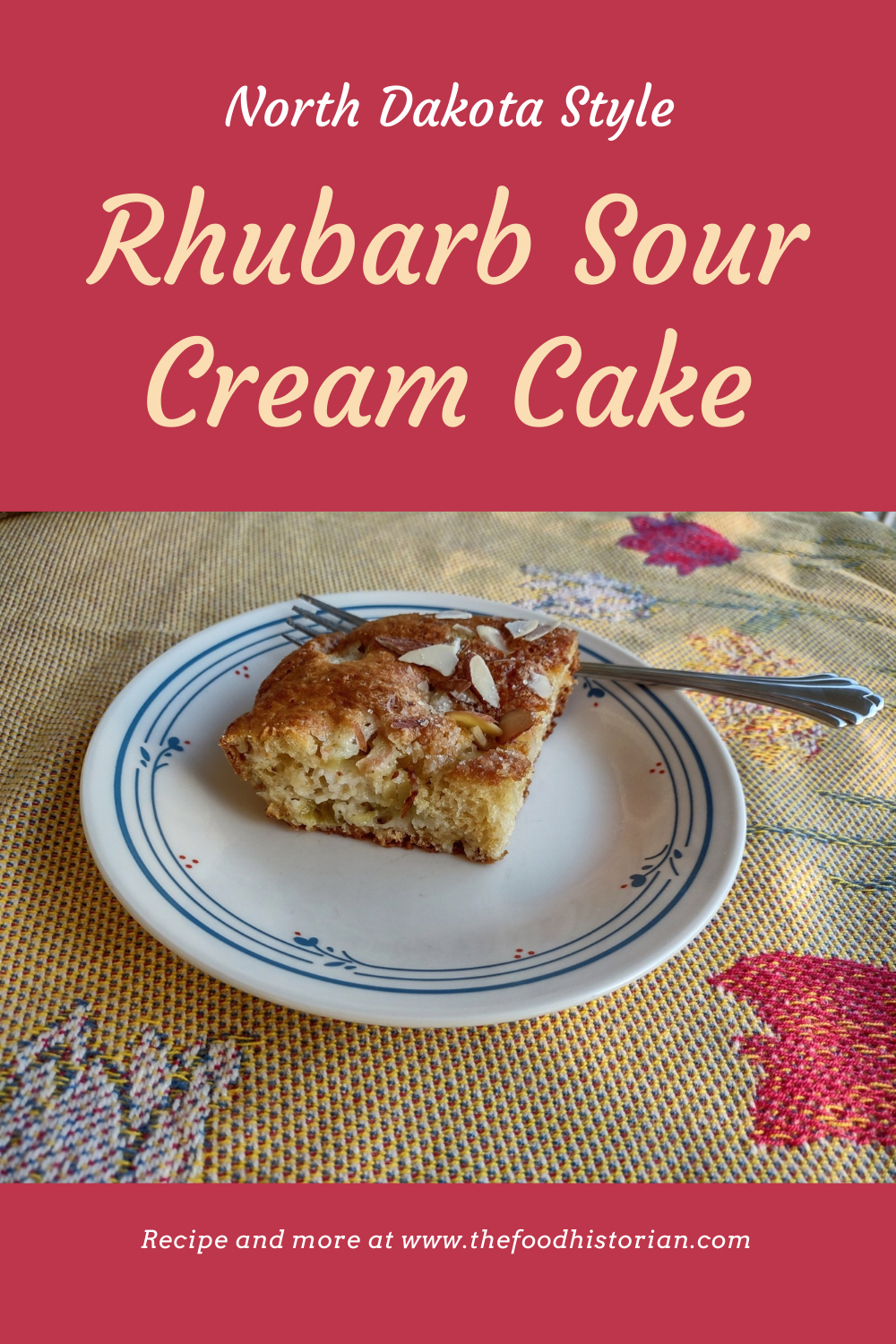
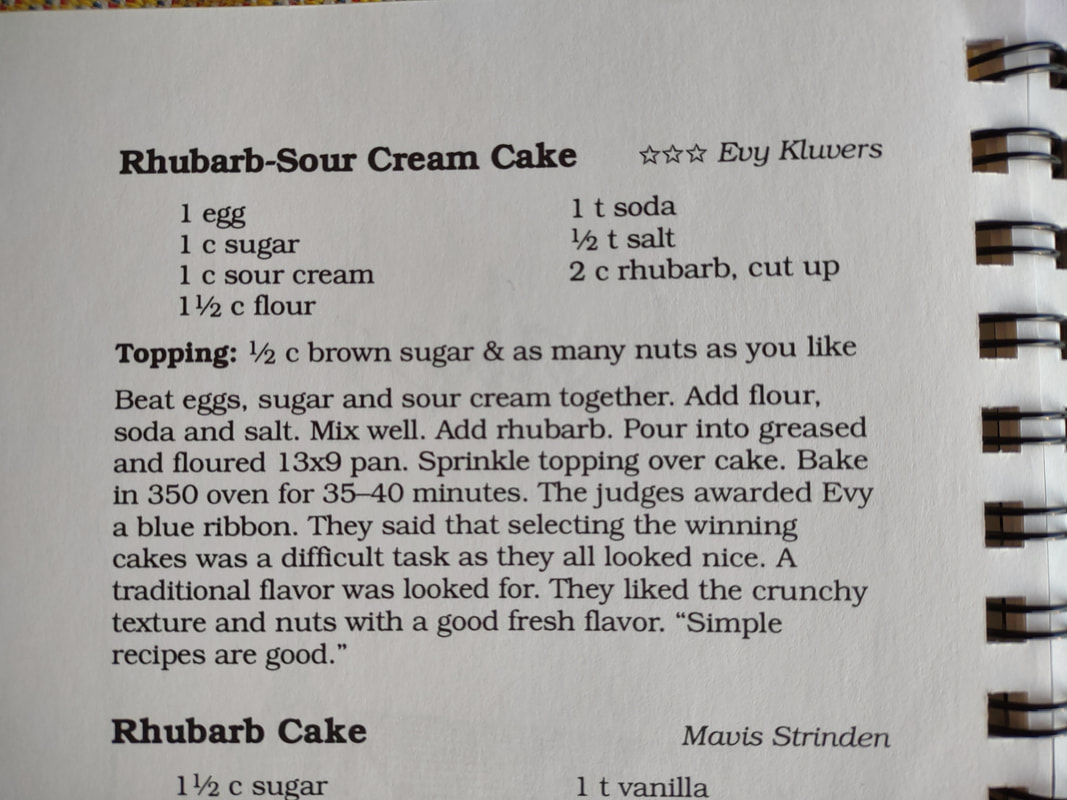
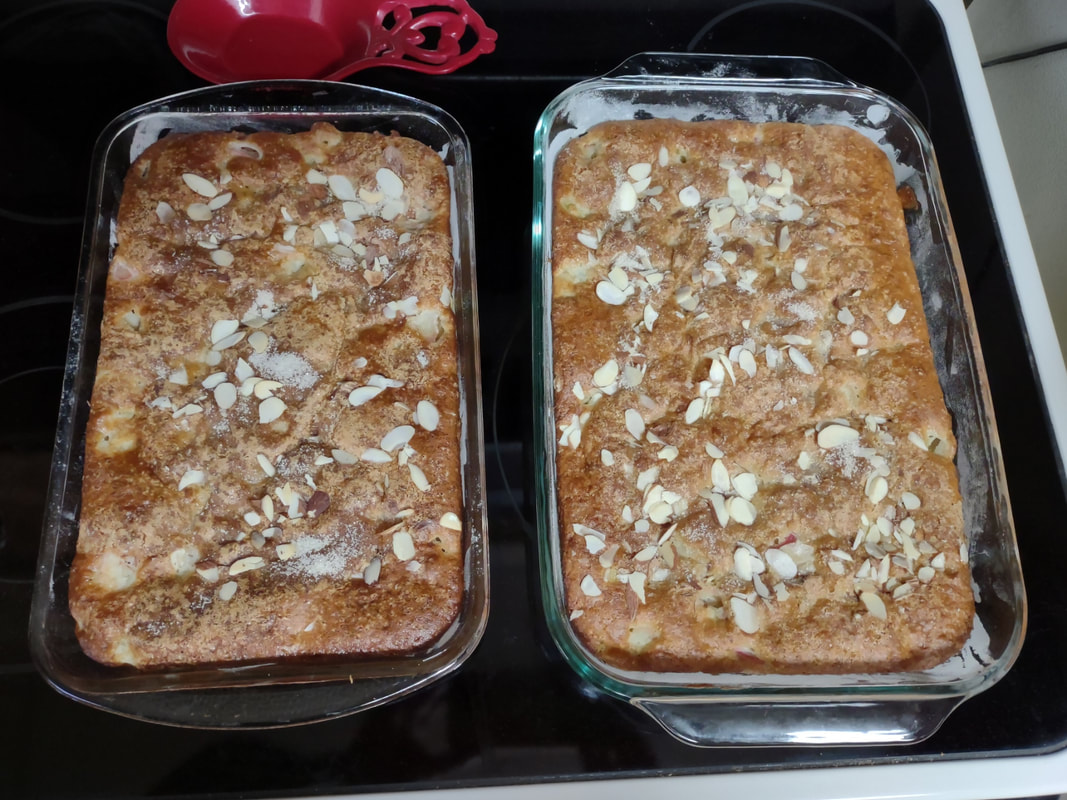
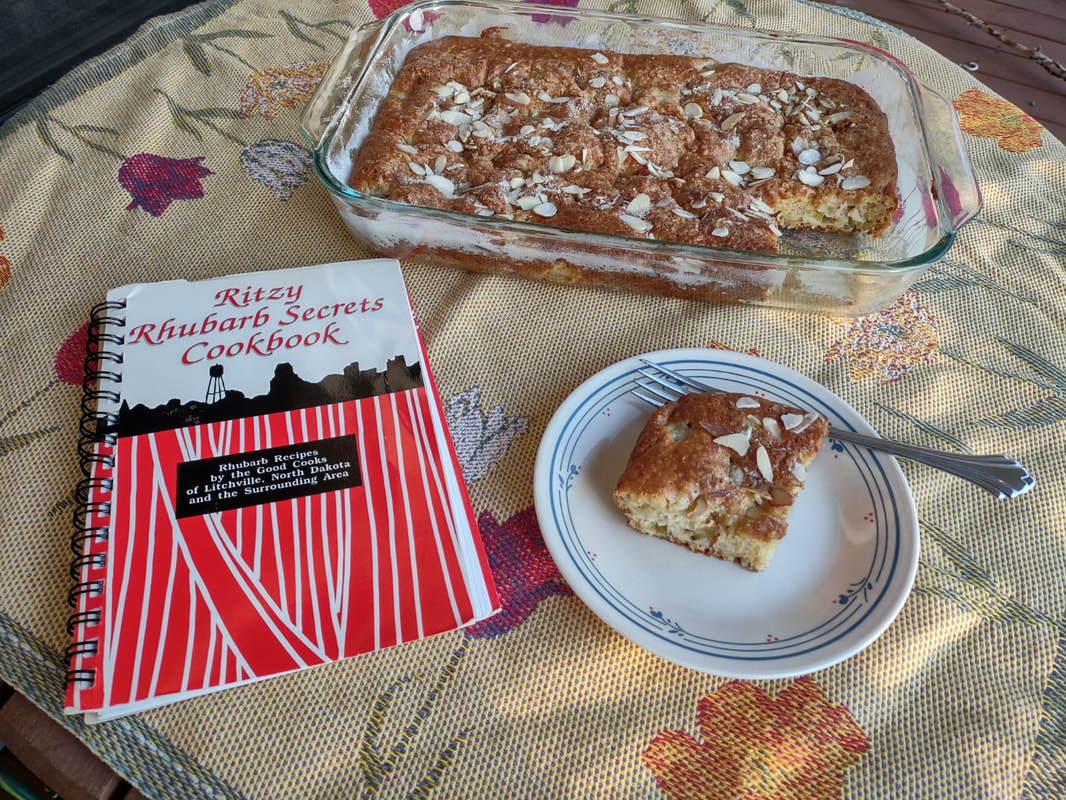
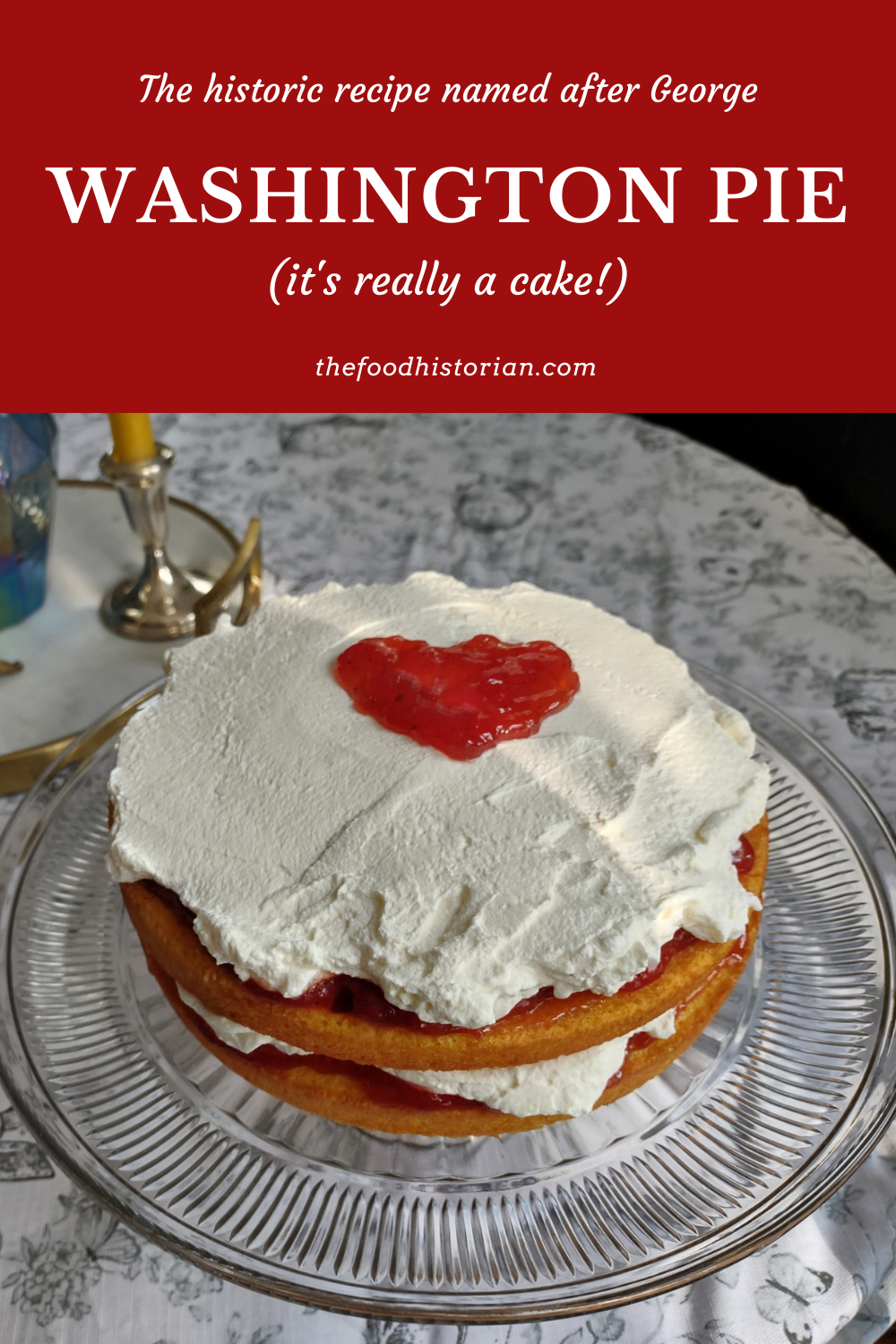
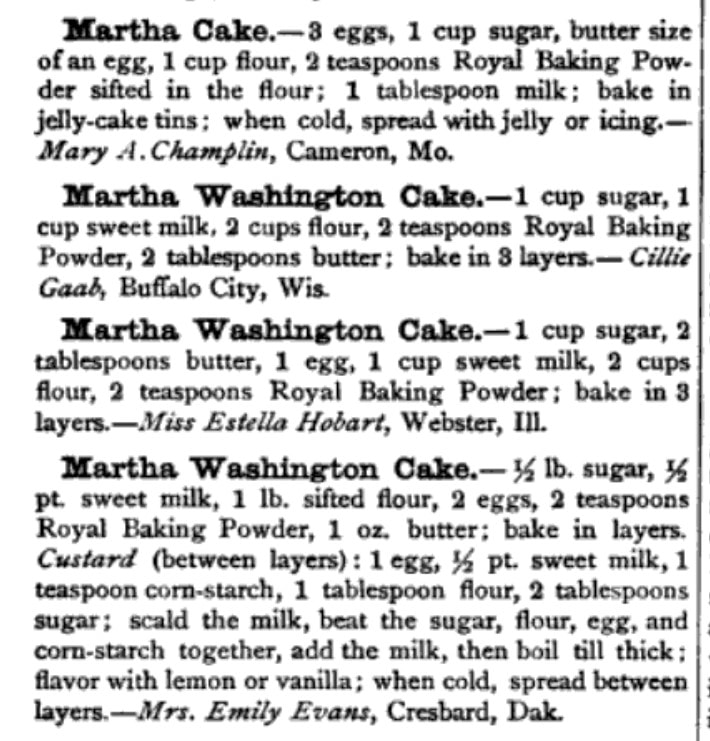

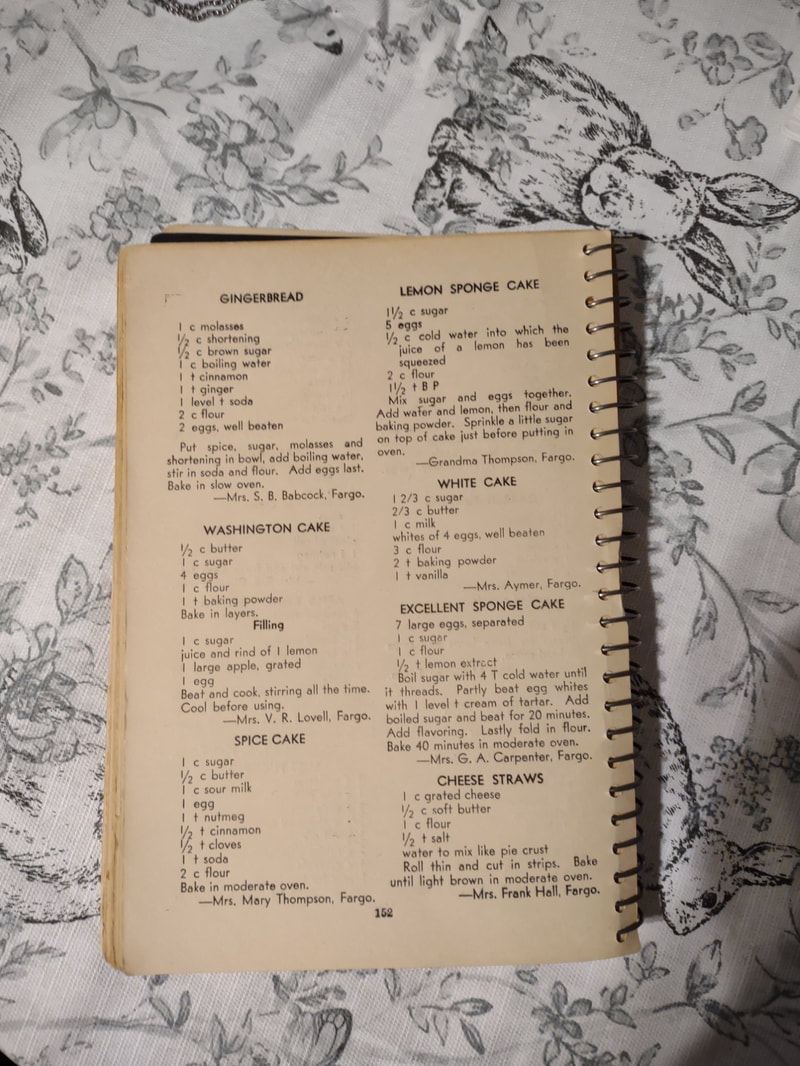
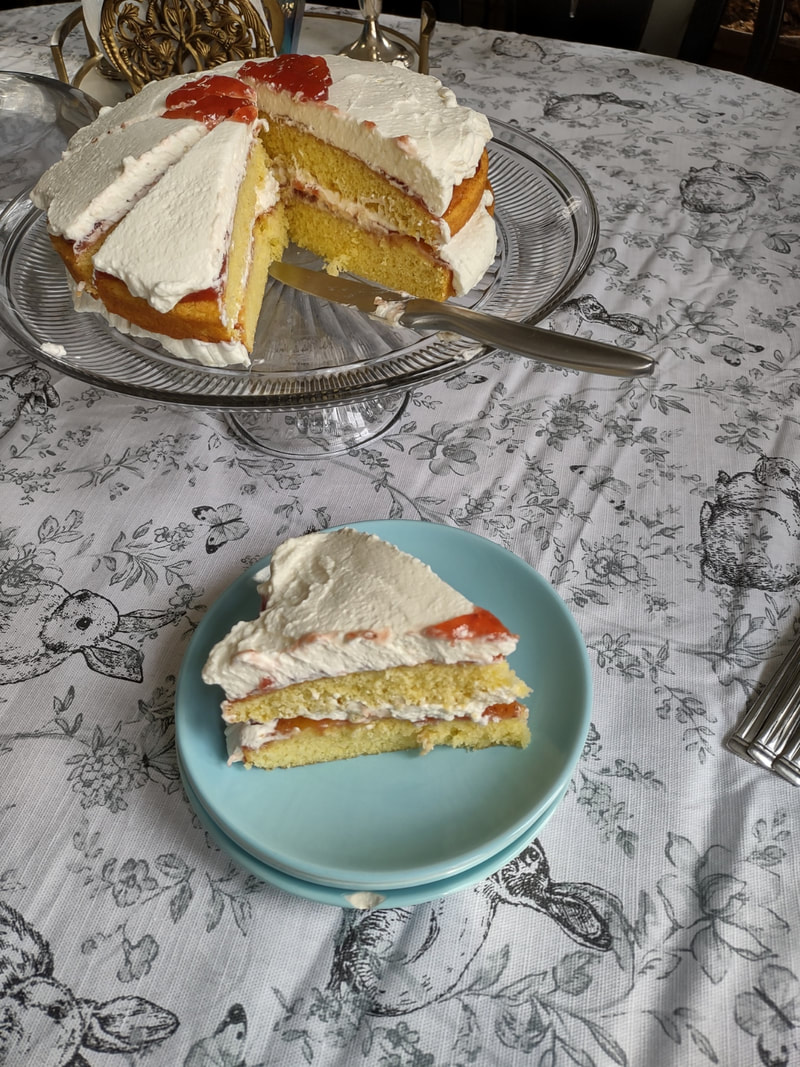
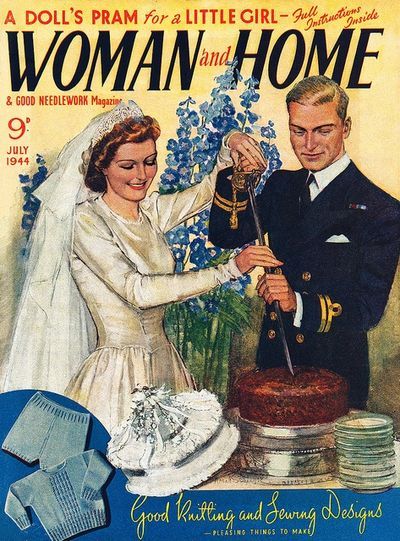


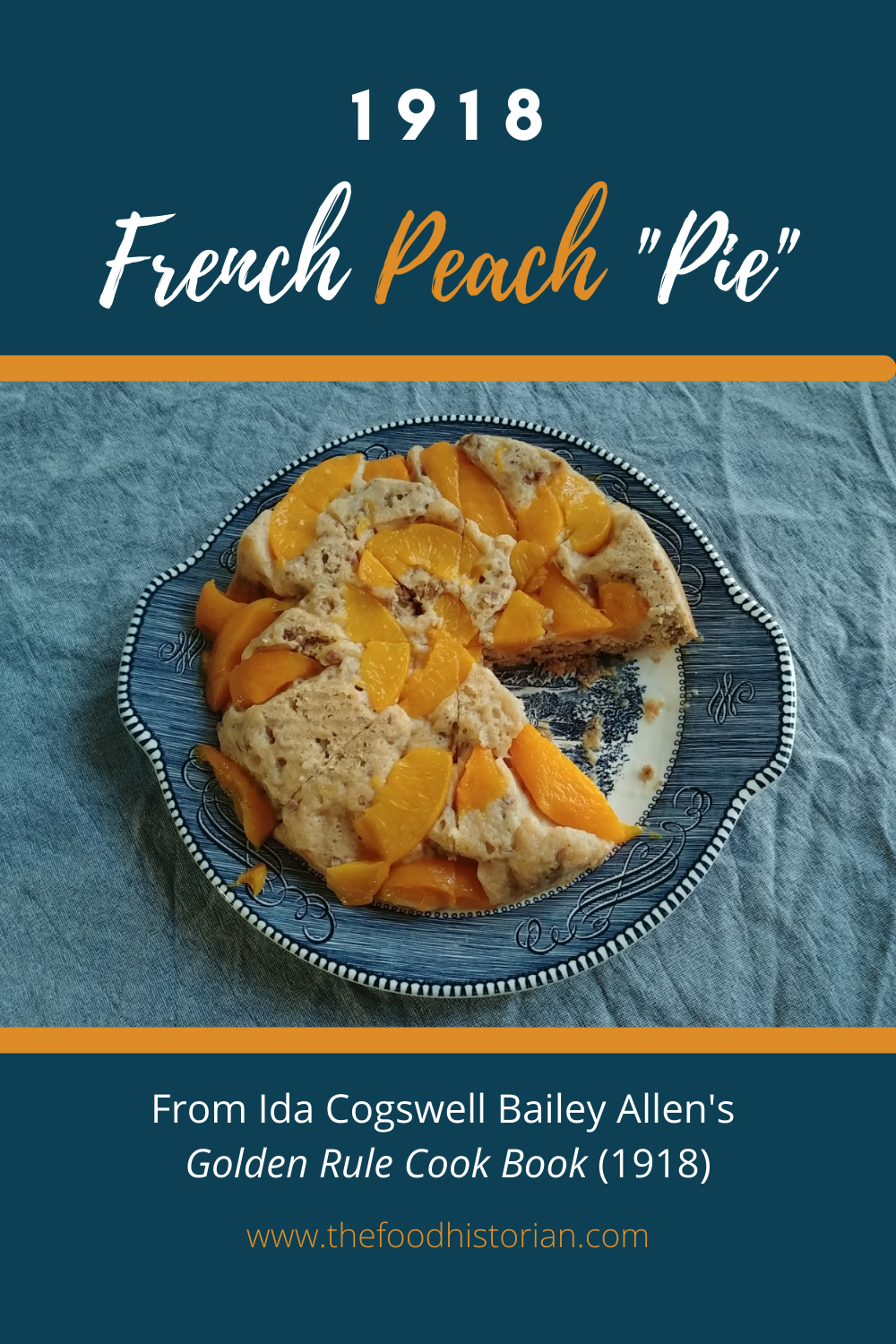

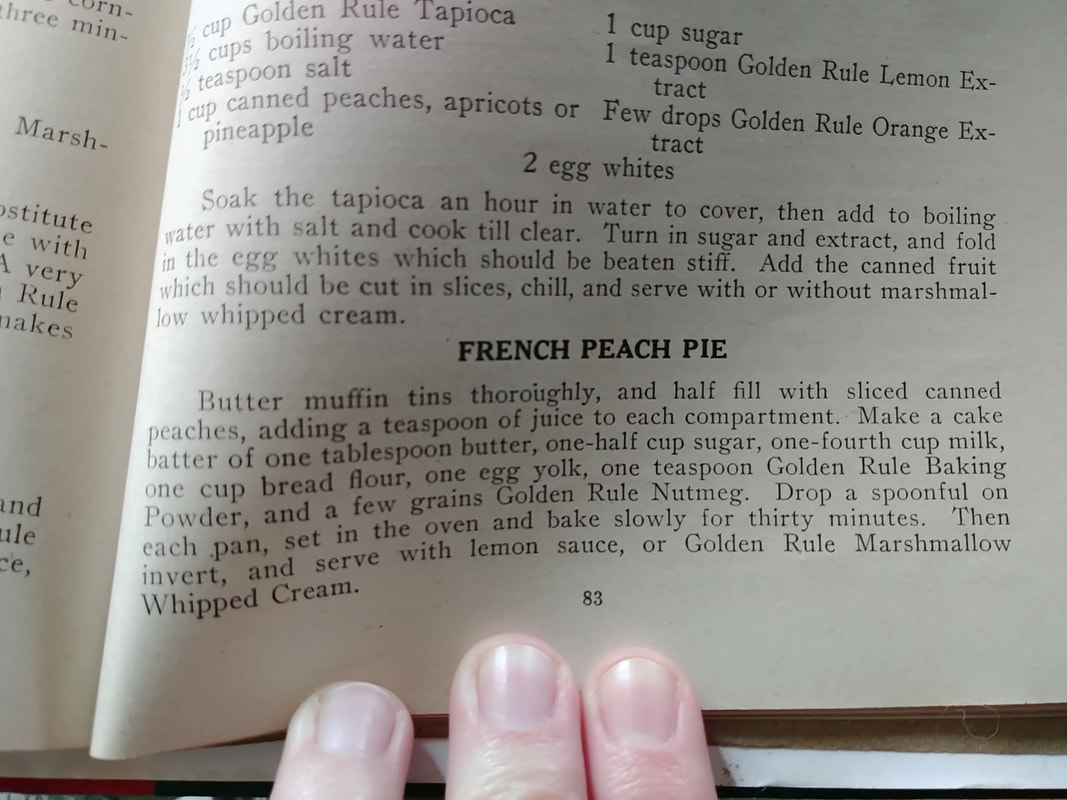






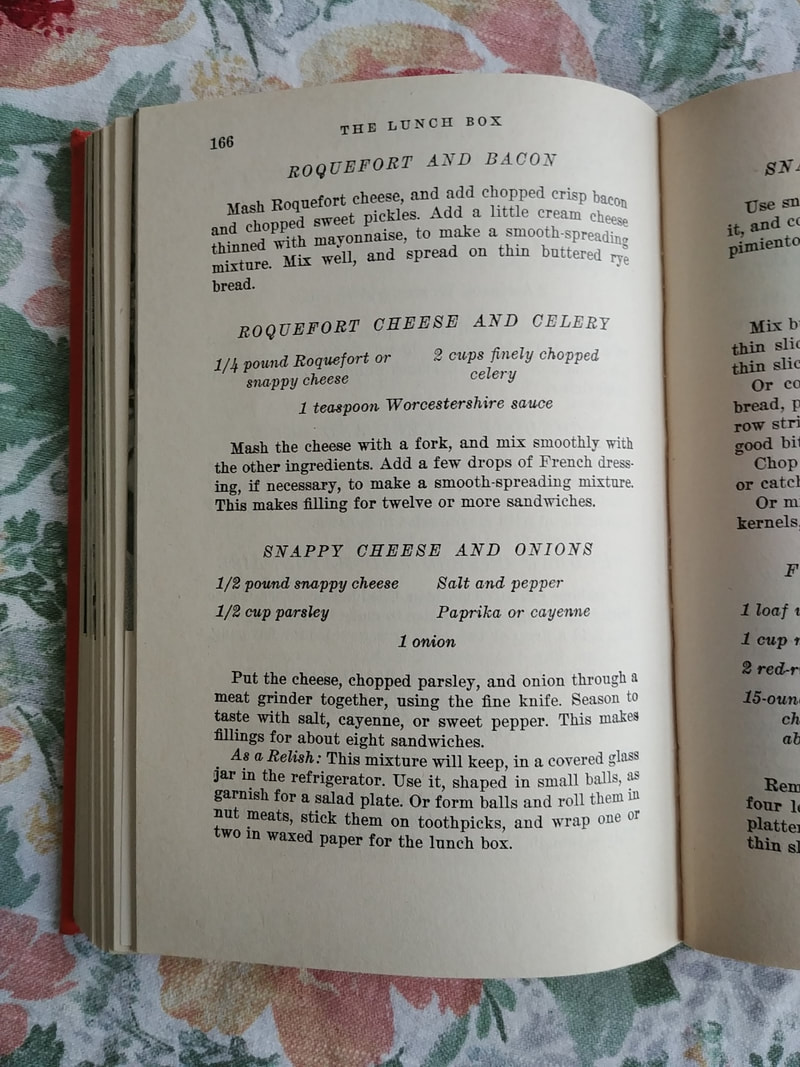
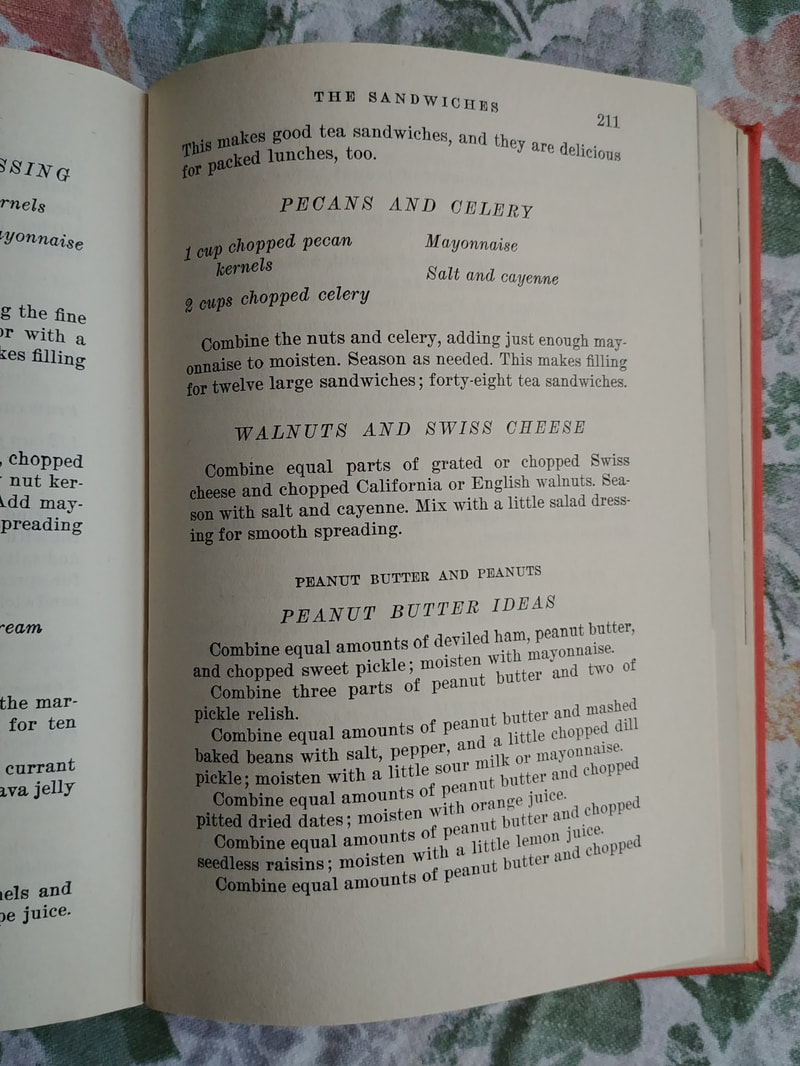
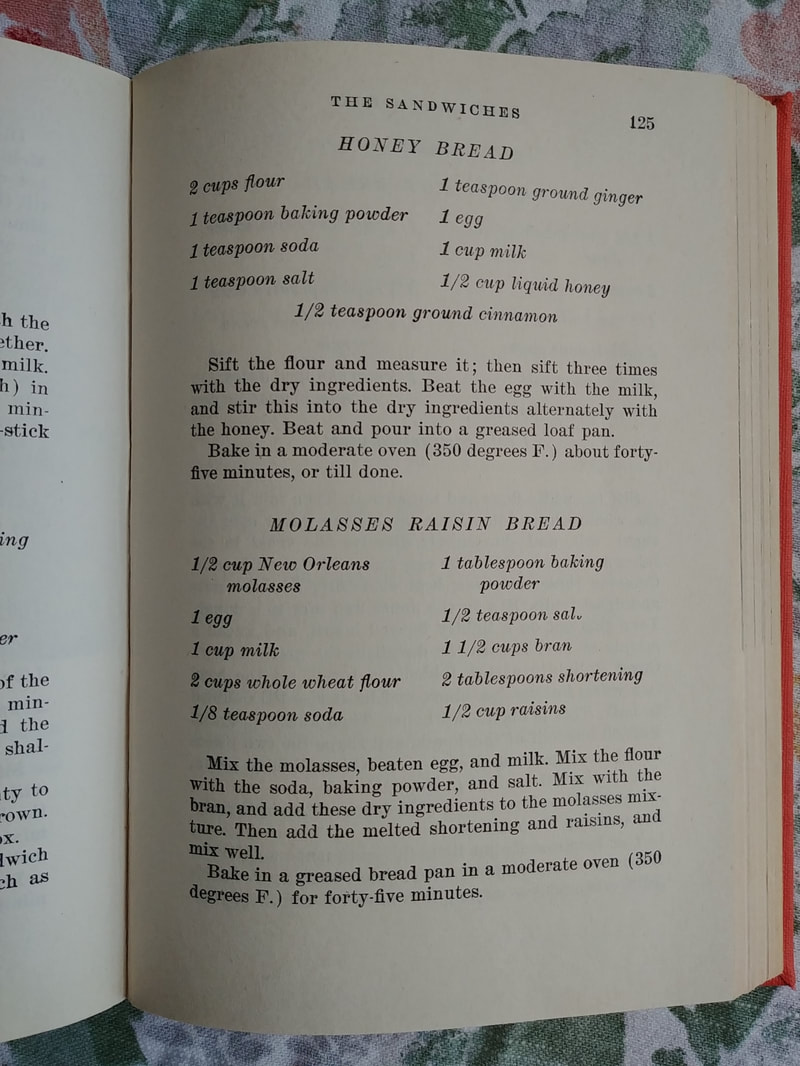

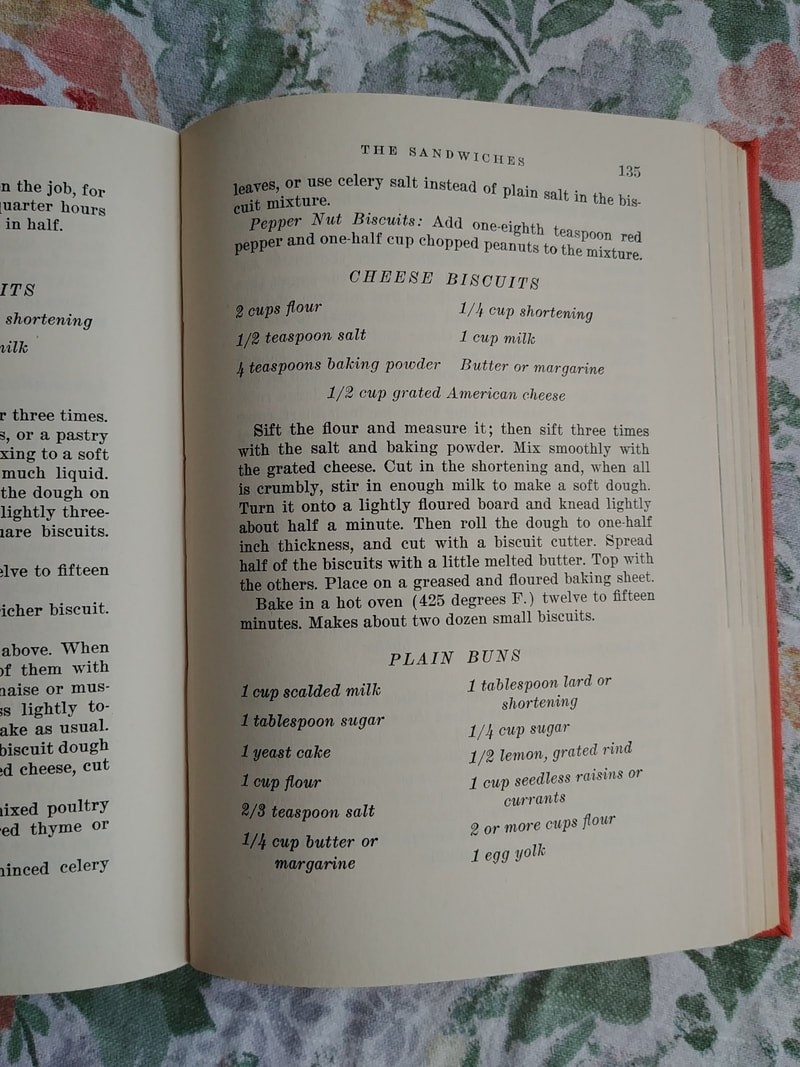

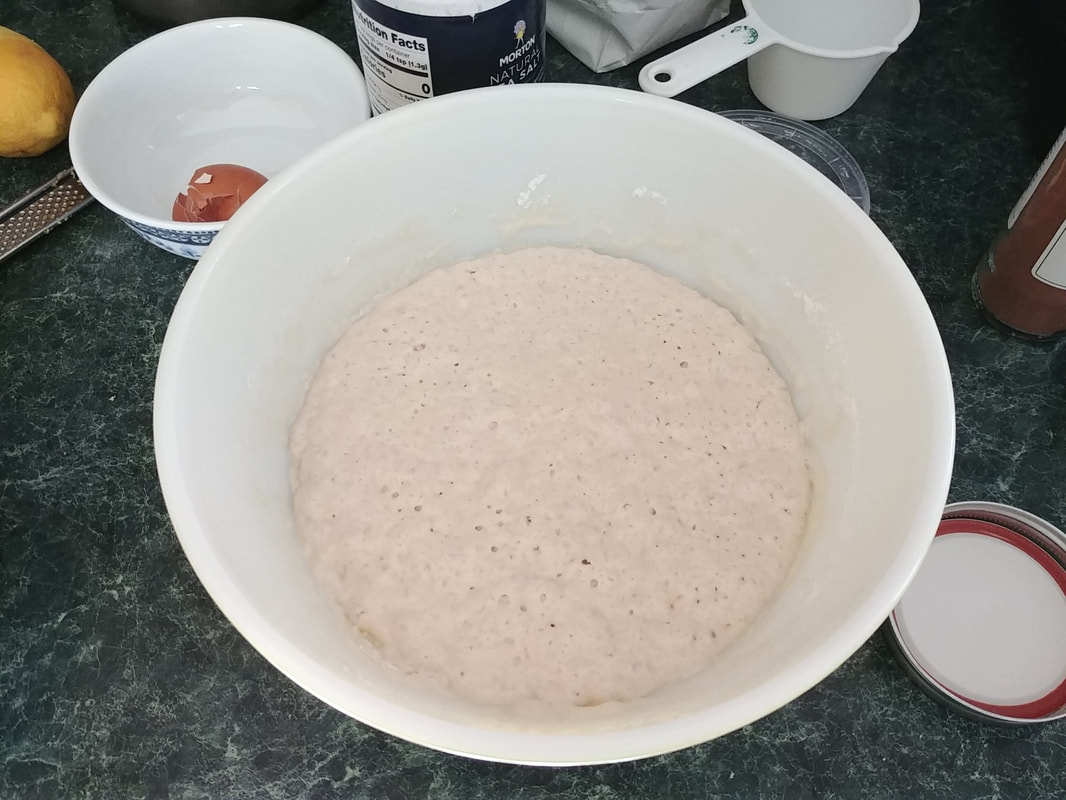
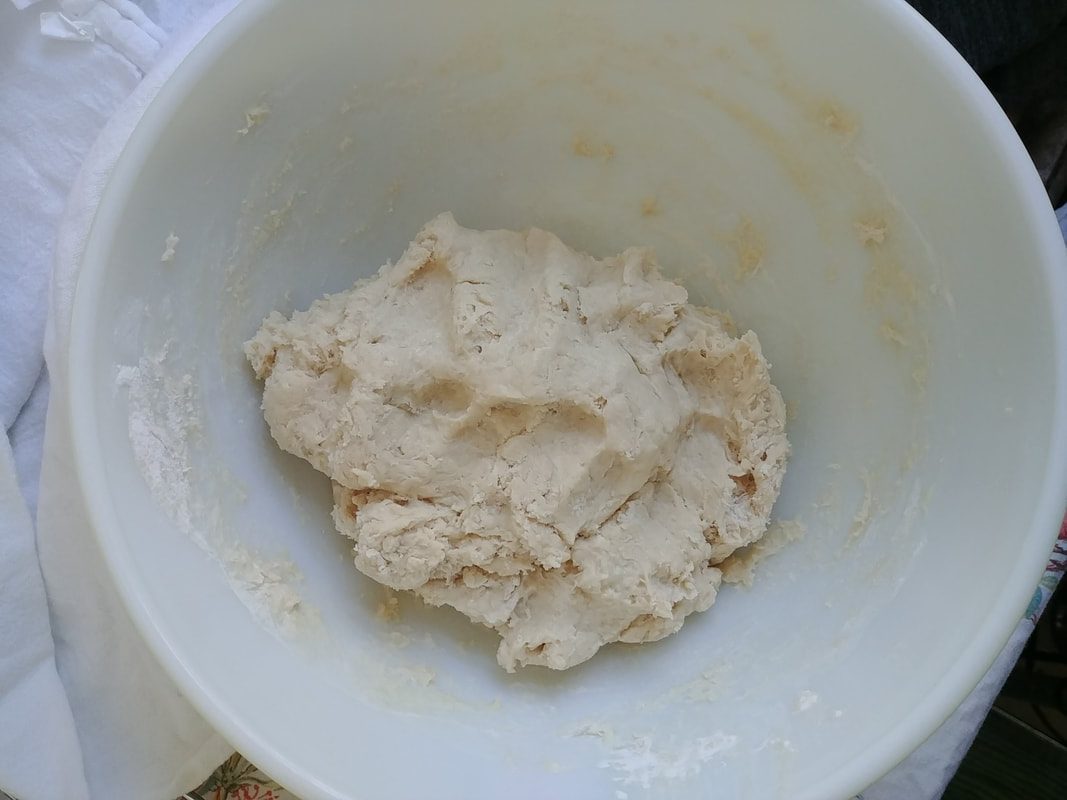




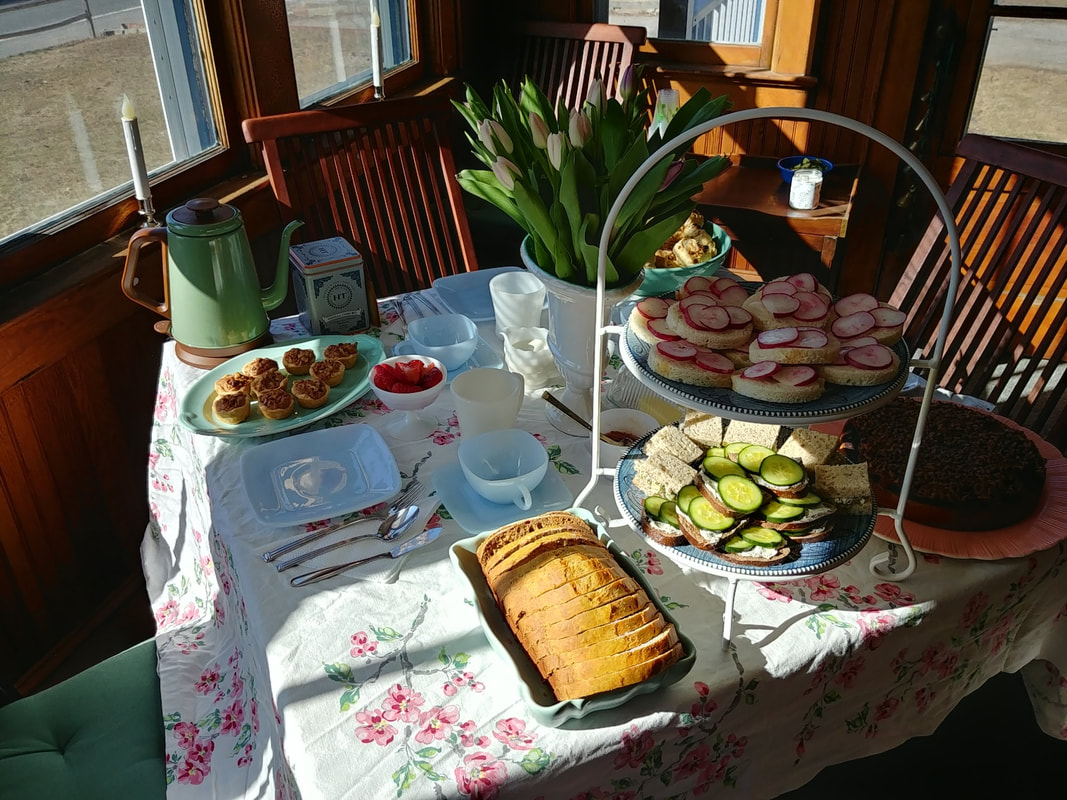
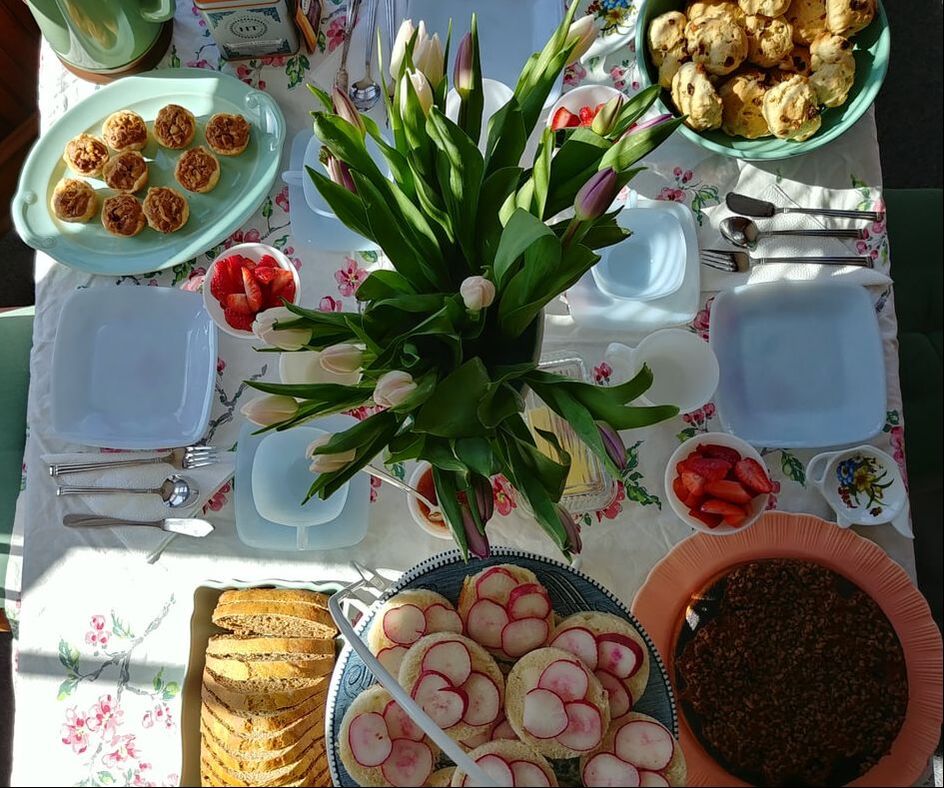







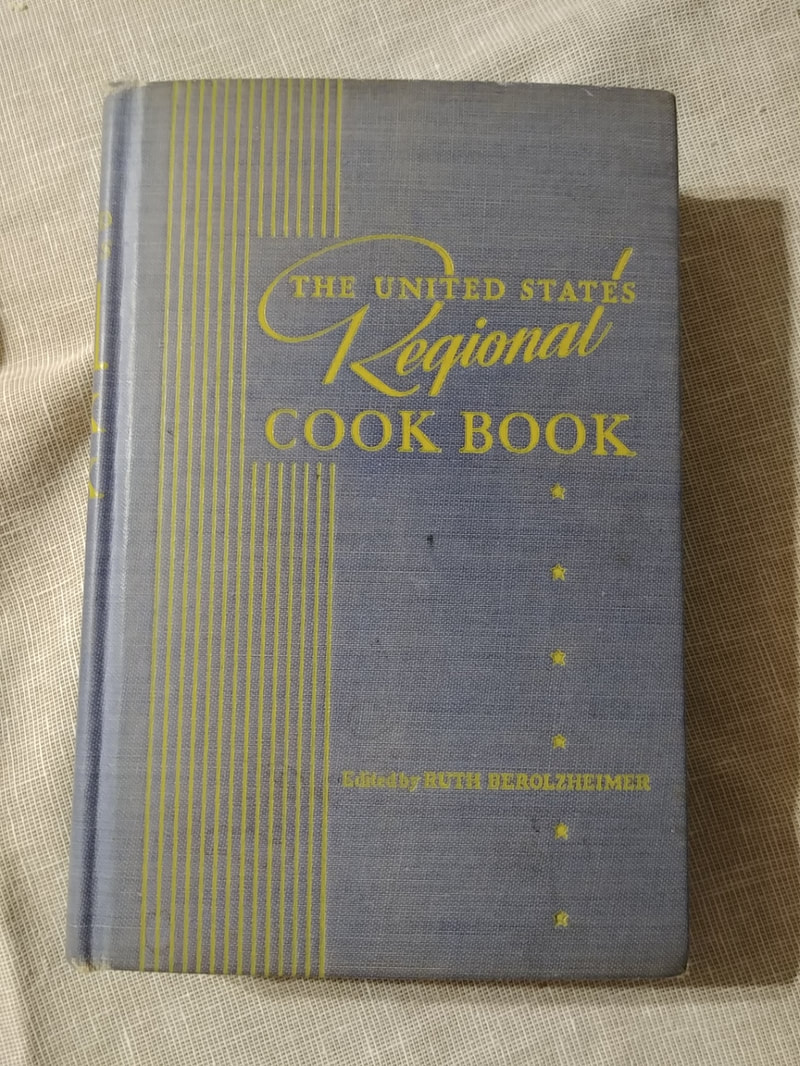
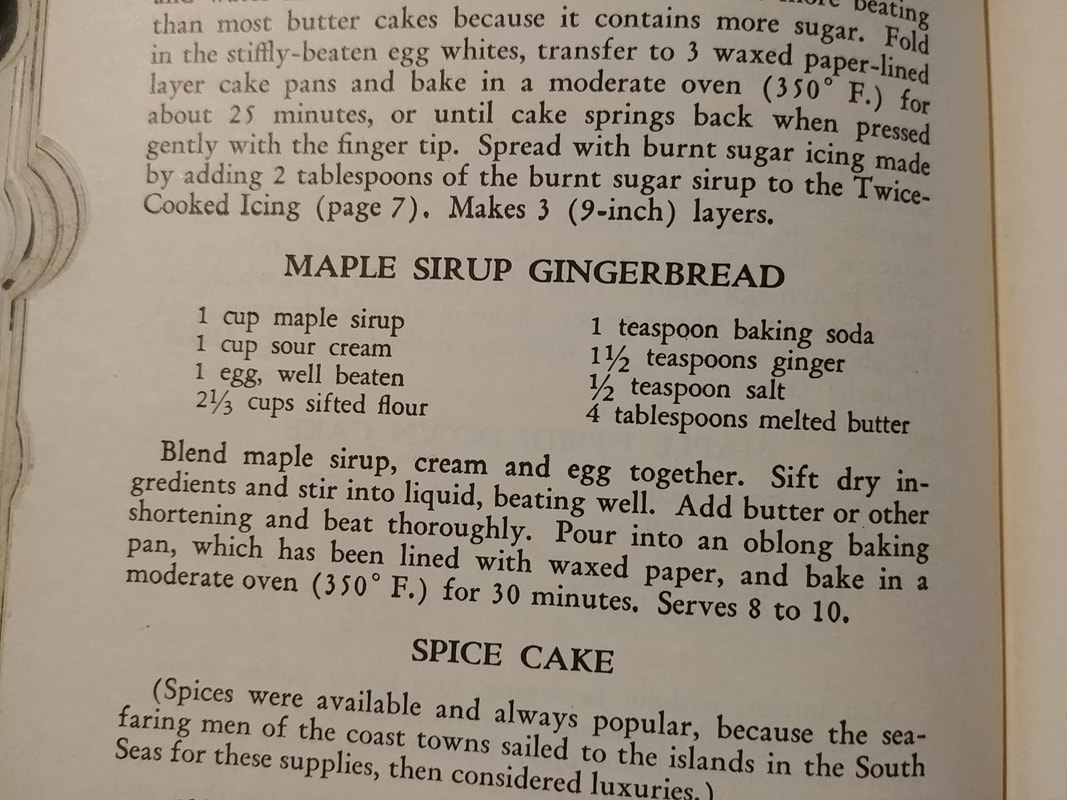
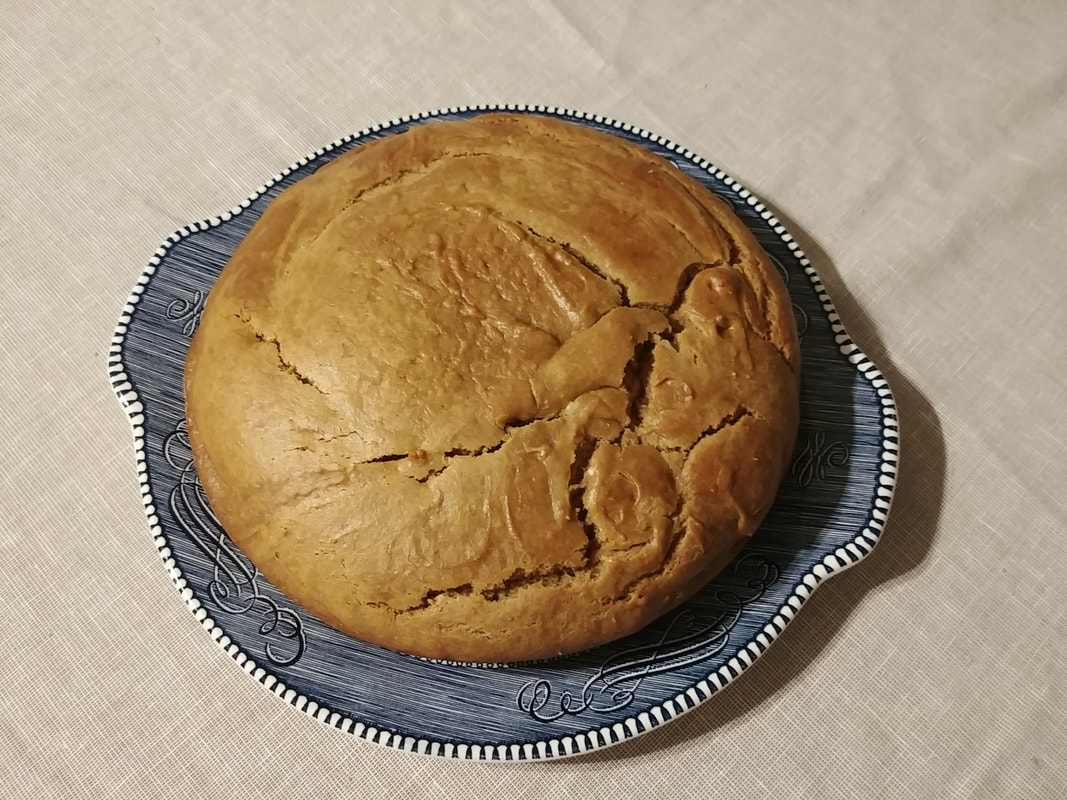


 RSS Feed
RSS Feed